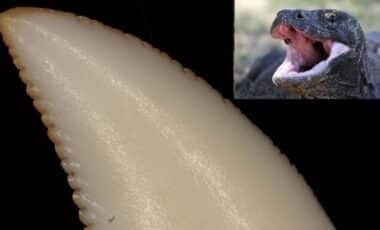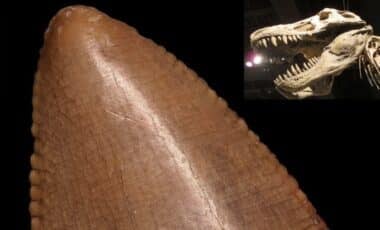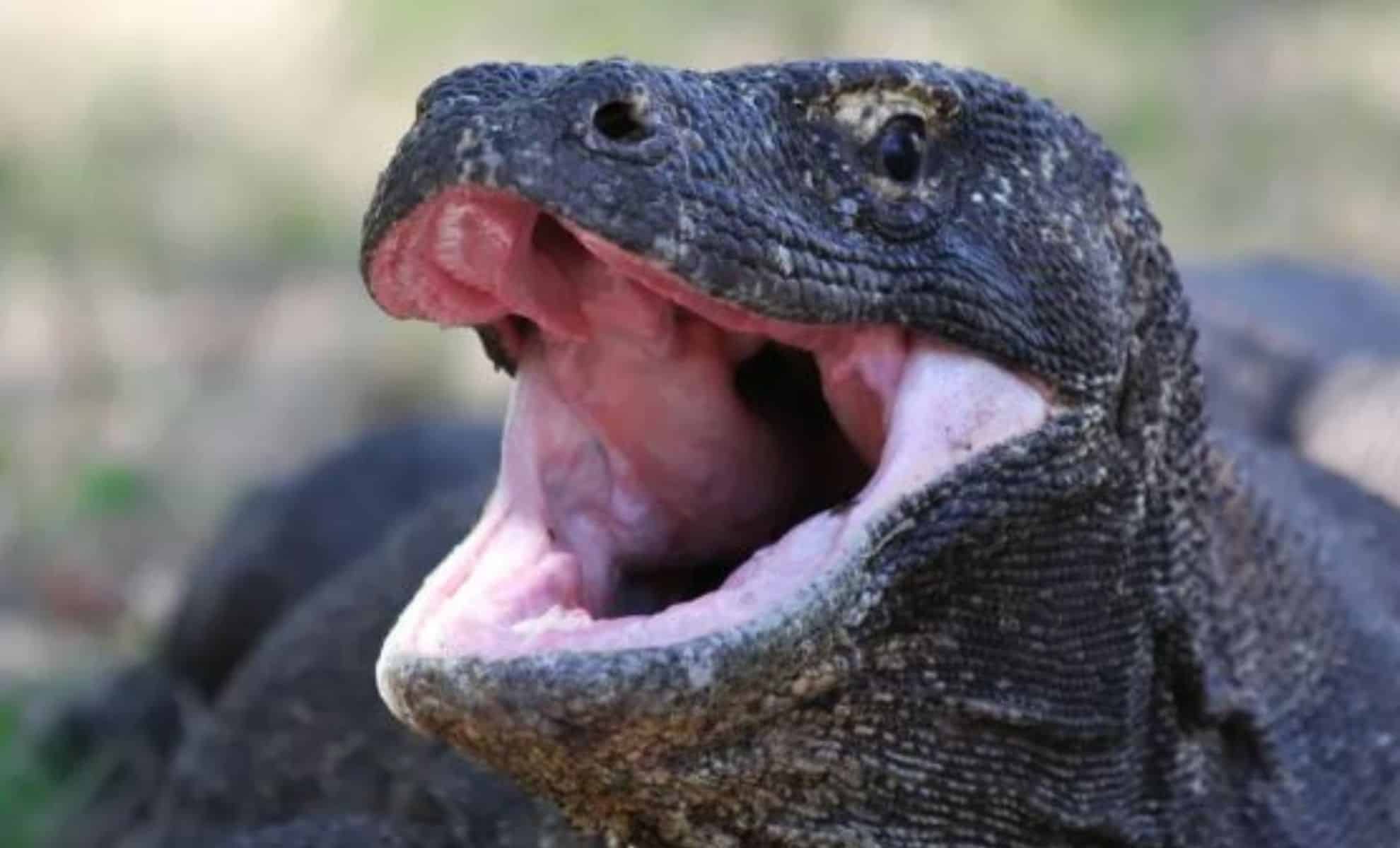Groundbreaking research has revealed that Komodo dragons, the largest living lizards, possess a unique adaptation in their teeth: a concentrated layer of iron.
This discovery sheds light on the evolutionary adaptations of these formidable predators and provides new insights into their hunting efficiency.
The unique iron-tipped teeth of Komodo dragons
Komodo dragons, native to the islands of Indonesia, are known for their size and predatory skills. Weighing up to 175 pounds, these reptiles are apex predators capable of taking down prey much larger than themselves. A recent study conducted by researchers from King’s College London has discovered that the teeth of Komodo dragons are not only jagged and curved, but also covered with iron. This iron coating, especially concentrated on the edges of their teeth, enhances their ability to cut through flesh and bone with ease, making them some of the most efficient predators on Earth.
Dr. Benjamin Tapleycurator of reptiles and amphibians at the Zoological Society of London, emphasized the significance of these findings, saying: “As the world’s largest lizards, Komodo dragons are undeniably impressive animals. Having worked with them for 12 years at London Zoo, I continue to be fascinated by them and these discoveries further highlight how amazing they are.”
The study revealed that iron deposits in the teeth are concentrated around the jagged edges, which function like a serrated knife. This adaptation allows Komodo dragons to effectively dismember their prey, a critical skill for an animal that often deals with large and struggling targets.
Comparative Analysis: Reptiles and Prehistoric Predators
Opening of iron-tipped teeth in Komodo dragons is not only a marvel of modern reptilian adaptation, but also provides intriguing parallels with prehistoric creatures. Dr. Aaron LeBlanc, a paleontologist involved in the study, explained: “Komodo monitor lizards have curved, serrated teeth to tear and tear their prey just like those of carnivorous dinosaurs. Iron helps keep teeth sharp, which is crucial for their survival.”
Researchers compare teeth of Komodo dragons with those of other reptiles, including crocodiles and monitor lizards, as well as fossilized teeth of carnivorous dinosaurs. While other reptiles have been found to have traces of iron in their teeth, the density and visibility of iron in the teeth of the Komodo dragon is significantly greater. This finding suggests that Komodo dragons have developed a specialized mechanism to maintain the sharpness and durability of their teeth, similar to adaptations seen in some types of dinosaurs.


Dr. LeBlanc noted the implications for paleontological research: “Unfortunately, using the technology we currently have, we cannot see whether or not fossilized dinosaur teeth had high levels of iron. What we found, however, was that larger carnivorous dinosaurs, like tyrannosaurs, did change the structure of the enamel itself on the cutting edges of their teeth.” This observation hints at a potential evolutionary link between iron-coated teeth of Komodo dragons and the thickened enamel found in some types of dinosaurs, both serve to improve tooth durability and cutting efficiency.
Implications for evolutionary biology and conservation
Opening of iron-tipped teeth in Komodo dragons has significant implications for the field of evolutionary biology. This suggests that mechanisms for maintaining sharp, durable teeth may have evolved independently in different carnivore lineages driven by similar environmental pressures and dietary needs. This discovery opens up new avenues for studying the adaptations of other reptile species, both living and extinct.
Domenic D’Amore, a paleontologist and co-author of the study, noted, “We’ve never seen iron in reptile teeth, which is very interesting. This leads to a whole new avenue of research.”
In addition to its scientific importance, the study also highlights the need for conservation Komodo dragons, which are classified as endangered. The unique adaptations of these animals highlight their ecological importance and the need for continued conservation efforts. Like Dr. Tapley pointed out: “These findings highlight the unique adaptations of Komodo dragons and underscore the importance of conserving these amazing animals.”
The researchers hope that their findings will not only contribute to our understanding of Komodo dragons and their evolutionary history, but also inspire efforts to protect these remarkable creatures from extinction. The study serves as a reminder of the hidden complexities in even the most well-known species, and of the continued need to study and conserve biodiversity.
Exploring the evolutionary paths of iron-tipped teeth
Opening of iron-coated teeth in Komodo dragons represents a significant advance in our understanding of reptilian adaptations and evolutionary biology. This prompts further investigation into whether similar adaptations exist in other reptile species, both extant and extinct. The researchers are particularly interested in examining the presence of iron in fossilized dinosaur teeth, as it may provide new insights into the feeding behavior and ecological niches of these ancient carnivores.
Dr. LeBlanc and his colleagues plan to continue their research by examining more specimens and using advanced imaging techniques to reveal further details about the composition and function of iron in the teeth of reptiles. They also hope to study the potential evolutionary pathways that led to the development of iron-tipped teeth in Komodo dragons and other species.
As the scientific community delves deeper into the mysteries of adaptations of reptiles and dinosaurs, discoveries such as these underscore the importance of interdisciplinary research and continued exploration of the natural world. The findings not only improve our understanding of Komodo dragons but also contribute to the broader field of evolutionary biology, offering insight into the complex and diverse strategies that animals have evolved to survive and thrive.



